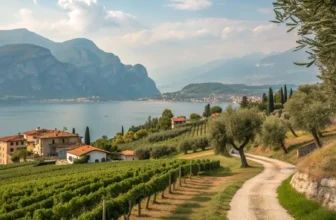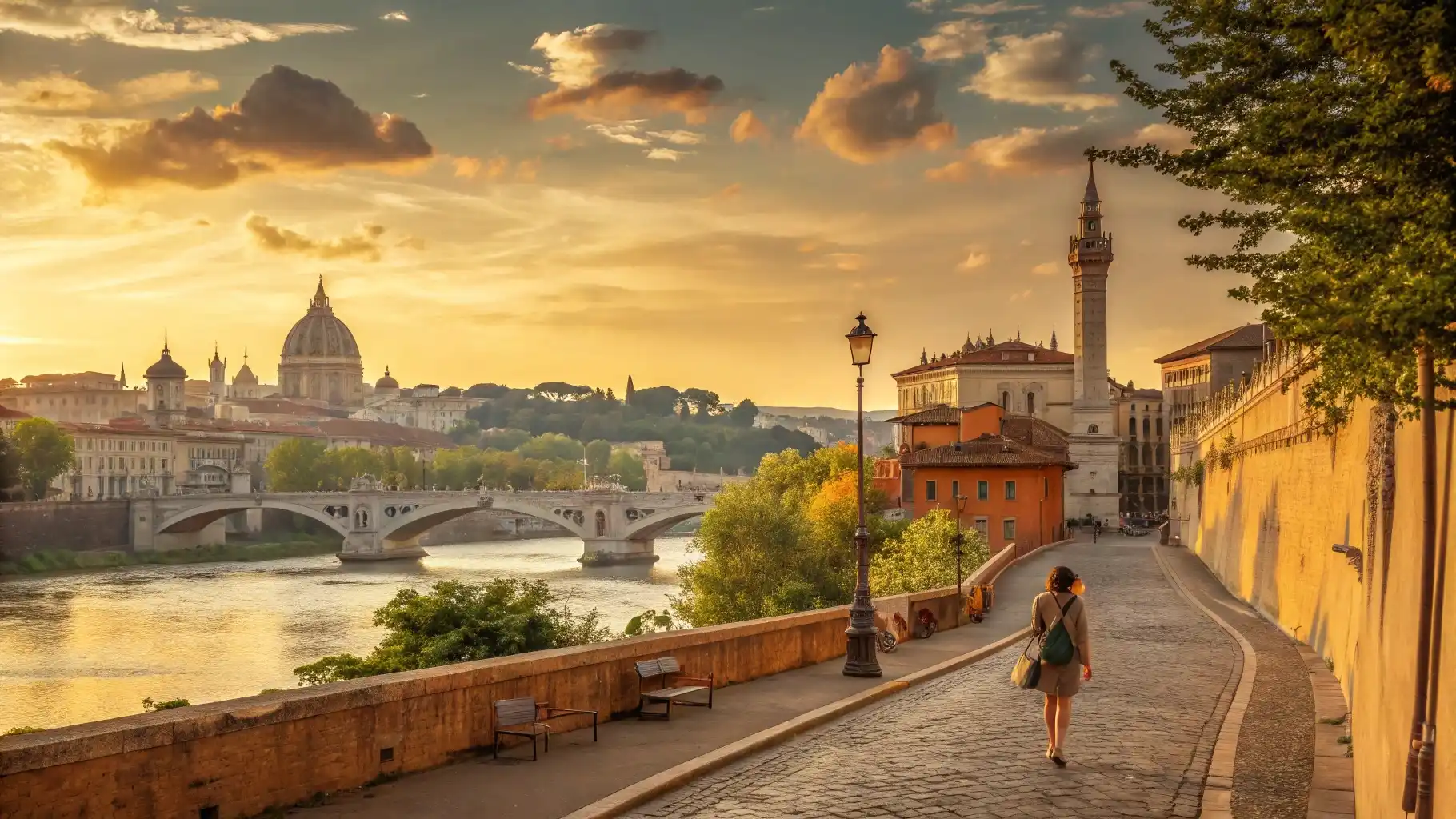
Picture this: stepping off a plane into a cobblestone square, the air rich with history, the scent of freshly baked bread wafting from nearby cafés, and the soft hum of a city where your money stretches further than you ever imagined.
Now imagine doing all this without the looming pressure of rising costs. In a world where financial security can feel uncertain, why not choose a place where every moment feels like a discovery?
As you read on, you’ll uncover destinations where adventure and comfort go hand in hand—without breaking the bank. Ready to embark on your next life-changing journey?
1. Valencia, Spain
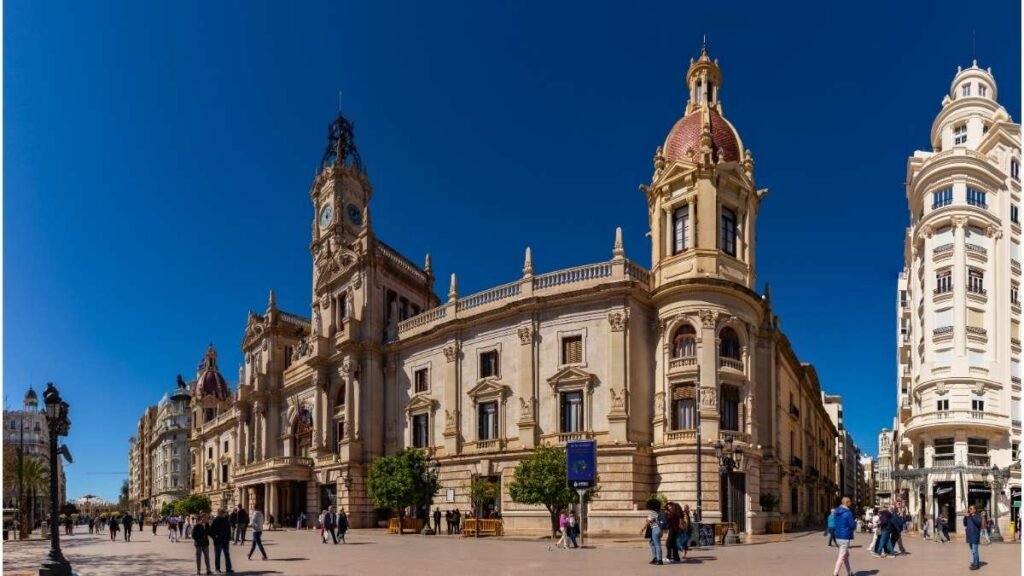
Valencia blends the relaxed Mediterranean vibe you’re hoping for with enough urban life to keep things interesting. It’s Spain’s third-largest city, with around 824,000 residents in the city proper and a metro area of about 2.5 million. In recent years, the airport saw 10.8 million passengers in 2024 — a sign that the city is really open and reachable. This matters for value because, compared to overheated tourist spots like Barcelona or Madrid, Valencia offers serious bang for your buck: lower accommodation costs, less “tourist tax,” and everyday essentials (groceries, transport, eating out) tend to be more affordable.
Here’s what makes it even better for retirees: the region had 5,596,426 foreign visitors in the first half of 2025, showing it’s a growing hub with a strong tourism economy, but still holds onto its local charm. Valencia offers a vibrant arts scene, ancient architecture, and beautiful beaches. You can even bike through the Turia Gardens — a lush park built in the bed of a former river.
Key Practical Information
- Peak/Off-Peak: Summer (June–Sept) is hot and busy; spring and fall offer 70-80°F (20-27°C) weather and fewer crowds.
- Best ways to reach & explore: Fly into Valencia Airport (VLC) or take high-speed rail from Madrid/Barcelona. The city center is walkable; there’s a solid metro and bike-friendly paths.
- Ideal duration: 4-6 days gives you time for the historic old town, the futuristic City of Arts and Sciences, beach at Malvarrosa, and a day trip to the Albufera wetlands.
- Budget considerations: Dining out is cheaper than in Spain’s larger metros; local drinks and tapas go a long way.
- Cultural etiquette: Siestas still matter somewhat; many shops close midday. Evening eating around 9pm is common.
- Photography opportunities: Sunset over the Turia Gardens, the bright white futuristic architecture of the City of Arts and Sciences, the golden sand of Malvarrosa Beach.
2. Porto, Portugal

Porto is one of those walking-through-history cities. It’s Portugal’s second-largest city, with around 252,000 in the municipality but about 1.4 million people in the urban area. Its historic center is a UNESCO World Heritage Site, making it a major attraction for those interested in history and culture. Porto’s tourism numbers are climbing, with 5.9 million overnight stays in 2023, up from 4.8 million in 2022. This speaks volumes about its growing popularity but still relatively affordable vibe. You won’t feel overrun by tourists like you might in Lisbon.
What’s great about Porto for those living on a fixed income is the value you get. Lodging, food, and public transport are all more affordable than most Western European capitals. Plus, with its world-renowned port wine, the city offers unique experiences that are hard to beat. In fact, Vila Nova de Gaia, the town across the river, is home to many famous port wine cellars that are open for tours.
Key Practical Information
- Peak/Off-Peak: Summer (July/Aug) is warm and lively; spring and autumn are milder with fewer crowds. Winters are mild but rainier.
- Getting around: Fly into Francisco de Sá Carneiro Airport. Metro and trams link the city; downtown is highly walkable (especially the Ribeira riverside).
- Ideal stay length: 3-5 days. Enough time to wander the riverside, explore port-wine caves in Vila Nova de Gaia, climb up to the Clerigos Tower, and maybe take a Douro Valley wine day-trip.
- Budget: Lodging and dining tend to cost less than many European capitals. Public transport is affordable.
- Cultural tip: Portuguese are welcoming but reserve for small talk; learn a few words like “obrigado/obrigada”. In restaurants, tipping is appreciated but not mandatory.
- Photography gold: The view across the Dom Luís I Bridge at sunset, colorful houses cascading down to the Douro River, Azulejo-tiled interiors of São Bento train station.
3. Málaga, Spain

Málaga sits on Spain’s Costa del Sol and offers that sweet mix of city + beach + relaxed pace. The municipality had about 592,346 residents in 2024, and the wider region is booming tourist-wise, with the Costa del Sol welcoming 14.47 million visitors in 2024, with Málaga Airport handling 12.4 million transits — an 11.7% jump from 2023. This reflects the region’s popularity, but also, Málaga retains its authenticity, avoiding the over-commercialized feel of other coastal destinations. For someone thinking “how can I live comfortably and affordably abroad?”, Málaga stands out. Historic center, seaside promenade, and great weather most of the year.
The city is affordable for both tourists and residents. In March 2025, it saw over 1.07 million hotel nights, up 7.9% from the previous year, which shows growth in the tourism sector but still more manageable costs than other southern European hubs. Plus, with access to beaches, local parks, and festivals, there’s always something to do.
Key Practical Information
- Best seasons: Spring and autumn deliver warm sunshine (~20-25°C / 68-77°F) without blistering heat or crowds. Winters are mild; summer can feel hot and busy.
- Access & explore: Fly directly to Málaga–Costa del Sol Airport; city trains and buses reach downtown. A rental car can help if you want the coast. Downtown is easily walkable.
- Visit duration: 4-7 days is ideal — old town, Alcazaba fortress, beach time, maybe a day-trip to nearby white-villages or Nerja caves.
- Budget tips: Compared to the bigger Spanish cities, lodging and dining can be more affordable. Beachside apartments can still cost less than equivalent in major capitals.
- Cultural notes: Dinner often starts late (8-9pm). Sundays, many businesses close or open late. Respect quiet hours after ~10pm in residential zones.
- Photography opportunities: Views from Gibralfaro Castle at sunset, colourful street scenes in the old town, and the Mediterranean coast shimmering.
4. Lisbon, Portugal
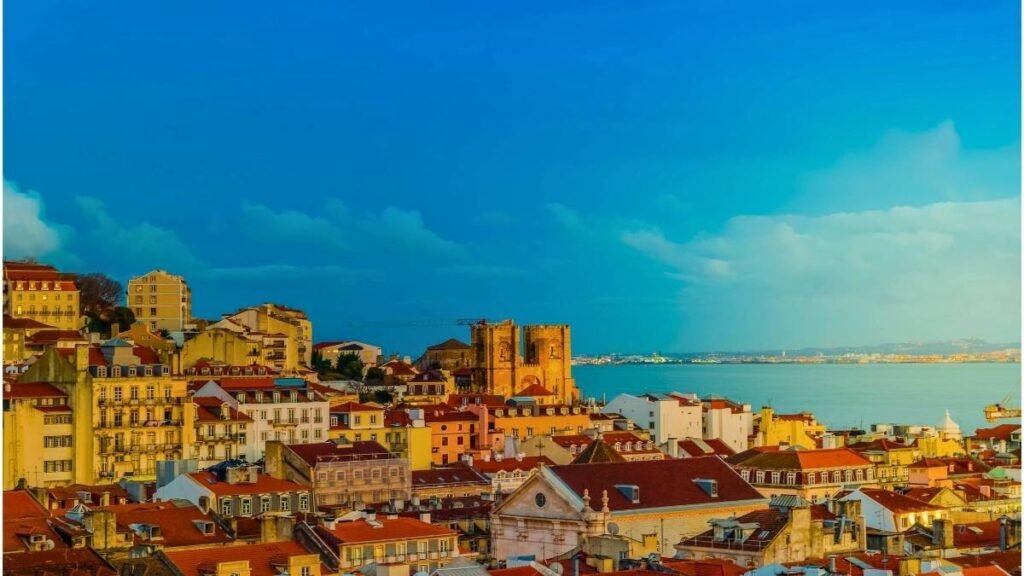
Lisbon has the charm of an old-world city with modern conveniences, and it’s still relatively affordable compared to other Western European capitals. In 2024, Lisbon welcomed 6.54 million international visitors, plus 1.98 million domestic guests — showing strong demand but still plenty of room for value-seeking travellers. Lisbon ranked 2nd globally for solo travel destinations in 2025, with an average score of 9.03/10. This makes Lisbon particularly appealing for solo travelers, retirees, and digital nomads alike. And despite being a bustling capital, Lisbon is incredibly easy to navigate, making it a top choice for those living on a budget.
One of the key reasons Lisbon stands out is its cost of living. Lodging, food, and transportation are generally more affordable than in other major European cities like London or Paris. For retirees, the value is huge: explore colorful neighborhoods like Alfama, Bairro Alto, and Belem while enjoying some of the best public transport options in Europe.
Key Practical Information
- Seasons: Spring and fall are best — warm and less crowded. Summer heats up and becomes busier, but winters are mild (just not beach-weather).
- Getting around: Lisbon Airport (LIS) is well connected. The metro, trams, and buses cover the city; great to stay centrally and walk a lot.
- Ideal stay: 3-5 days to cover the city, historic castle (São Jorge), nightlife, and maybe a short jaunt to Sintra.
- Value tips: Stay in neighborhoods like Graça or Mouraria to save on lodging. Eat where locals eat: small “tascas” (taverns) serve great food at lower cost.
- Culture tip: Portuguese speak English but learning a few basic phrases is appreciated. Respect quiet hours — many locals nap or rest in early afternoon.
- Photography opportunities: The sunset from Miradouro de São Pedro de Alcântara, quintessential yellow tram #28 climbing narrow lanes, the 25 de Abril Bridge across the river.
5. Alicante, Spain
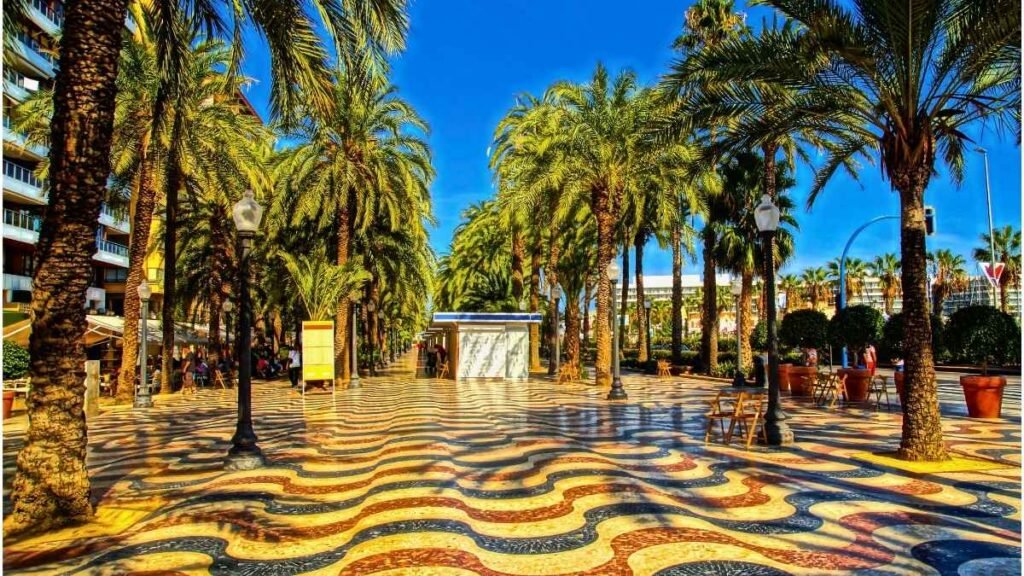
Alicante doesn’t always grab the headlines like other Spanish cities — and that’s part of its charm. It’s a medium-sized city on the Costa Blanca with mild winters and hot summers, and it’s increasingly popular both for tourists and people looking to stretch their budget. It’s one of Spain’s driest cities, with average rainfall of only ~284.5 mm per year. The region saw over 10 million international visitors in 2024, a 16.3% increase, indicating Alicante’s growing appeal while still offering value compared to other European hotspots.
The cost of living here is noticeably lower than in other parts of Spain. You’ll find lodging and dining options that won’t break the bank, and the cost of everyday essentials remains affordable. Whether it’s strolling along the Explanada de España or enjoying the historic Santa Bárbara Castle, Alicante offers plenty of charm and a welcoming atmosphere for those on a fixed income.
Key Practical Information
- Best time to visit: April-June or September-October for warm weather (~25-30°C/77-86°F) with fewer crowds. In midsummer, it will be hot and busier.
- Access & getting around: Alicante–Elche Airport is well-connected; you can fly from many European cities. The city center and beach (Playa del Postiguet) are walkable; tram and train connect coastal areas.
- Suggested stay: 4-6 days gives you time to explore the castle (Castle of Santa Bárbara), soak up beachfront views, stroll the Explanada de España, and take a side trip to a nearby village or island.
- Budget tips: Compared to Spain’s more famous hotspots, you may get more value for lodging and food. Supermarkets and local markets help you save if you self-cater.
- Cultural etiquette: Spanish lunch is usually 2-4 pm; many shops close midday and reopen later. Evenings start late: dinner at 9-10 pm is common.
- Good photo spots: The sunset from the castle ramparts, palm-lined Explanada, turquoise Mediterranean off the coast.
6. Budapest, Hungary

Welcome to the city of thermal baths, grand architecture, and a rhythm all its own. In Budapest you’ll find a sprawling capital of about 1.7 million people in the city proper, with its metro area reaching around 3.3 million. It’s been ranked as one of the top places in Europe for “child‑friendly living” and good public transport.
Think about it this way: you’ve walked out of your Florida‑home comfort zone and landed in a European capital where you can soak in a century‑old thermal bath, stroll a riverside boulevard, and in the evening dine in a stylish café, all without that “overpriced city” feeling. For example, monthly living costs (excluding rent) for a single person in Budapest are estimated around US $825.
Key Practical Information
- When to go: Spring (April–May) and autumn (Sept) for mild weather; winters are chilly but atmospheric, summers can get warm and a bit crowded.
- Getting around: Fly to Budapest Ferenc Liszt Airport; once you’re in the city, there’s a strong metro/tram network, and the old‑town is walkable.
- Stay length: 4‑6 days if you want a taste; for deeper experience 7‑10 days works well (spa days + castle hill + Danube cruise).
- Budget tip: Rent in outer districts is significantly cheaper; eating in local eateries (not just tourist zones) gives better value.
- Scenario to imagine: After a morning market visit and a thermal bath soak, you hop on the tram to the castle district for sunset over the city—then dinner with live music at a ruin‑bar that started life in an old, abandoned building.
All told, Budapest offers culture, comfort, and value in one neat bundle.
7. Prague, Czech Republic

Here’s a twist: in Prague you’ll not only experience fairy‑tale architecture and a river that winds through the city—it also quietly checks a lot of boxes for smart, affordable living. The city proper has about 1.4 million people; the metro area is roughly 2.3 million. It’s no surprise that this city consistently ranks as a favourite destination for those seeking both history and budget-friendly living.
Imagine retiring abroad and finding a city where you can wander narrow cobbled lanes, stop for a coffee in a historic square, and still stretch your budget further than many Western cities. Prague’s living costs are lower, and you’re getting all the historic charm.
Key Practical Information
- When to visit: Late spring (May) or early autumn (Sept) give you mild weather and fewer crowds; winter has its own charm (Think: Christmas markets + historic atmosphere).
- Getting around: Prague Václav Havel Airport, then tram/metro into the heart. The old town is easily explored on foot.
- Ideal stay: 3‑5 days: hop from the Old Town Square to the castle, cross the Charles Bridge early morning, maybe take a half‑day to a nearby village.
- Budget awareness: Food and lodging are more affordable than many European capitals—but getting into the most touristic zones and staying in boutique hotels can still push up costs.
- Distinct scenario: Early morning you join locals for a seaside‑feeling riverside walk, midday you explore a medieval underground museum, evening you savour pierogi in a tucked‑away tavern where the locals go.
In short: Prague’s a strong candidate if you want old‑world Europe without the over‑stretched budget.
8. Kraków, Poland

Let’s change the angle: in Kraków you’re immersed in one of Europe’s oldest cities (it was Poland’s capital until 1596) and you still pay far less than in many Western choices. Monthly living costs for a single person in Kraków are estimated around US $832 (excluding rent).
Picture this: you live on a historic square, you step out to a café with a view of Gothic towers, and later take a short trip to a salt‑mine or old Jewish quarter—yes, there’s that layering of history. But you’re doing it with a smarter budget.
Key Practical Information
- Visit time: May or Sept for mild weather; winters are cold and snowy.
- Access & mobility: Kraków has an airport with European connections; downtown is compact. Public transport (trams, buses) is efficient.
- Suggested stay: 3‑4 days covers the historic core, Wawel hill, and day‑trip to nearby Ojcow or Wieliczka Salt Mine. For slower pace, stay 5‑6 days.
- Budget strategy: Lodging outside the main square cuts costs; local Polish eateries (“milk bars”) offer great value.
- Scenario to envision: Early morning you stroll by the Ljubljanica River sipping a coffee, midday you explore a medieval underground museum, evening you savour pierogi in a tucked‑away tavern where the locals go.
Kraków might just be the under‑the‑radar smart choice for value‑wise European new living.
9. Ljubljana, Slovenia

Here’s a fresh take: in Ljubljana you get a smaller‑scale capital (about 300,000 people) with charm, walkability, and a pace that feels more relaxed than larger European cities. Think riverbanks, pastel‑coloured buildings, café terraces, and a sense that you’re somewhere that hasn’t gotten as worn‑out by mass tourism yet.
For someone on a fixed income wanting to stretch retirement funds, Ljubljana offers a “big city amenities in compact form” scenario: museums, galleries, local markets, and green zones.
Key Practical Information
- Best time to go: Late spring or early fall; the weather is pleasant and fewer tourists than in high‑peak summer.
- Getting there & around: Ljubljana Jože Plečnik Airport serves some direct routes; once there, the centre is extremely walkable, bike‑friendly, and you can even explore surrounding lakes or hills with short trips.
- Ideal stay: 3‑5 days to soak in the centre, nearby Lake Bled or Postojna Cave if you fancy nature. For slower traveller, 7 days works nicely.
- Finance tips: Because it’s smaller, you’ll often find lodging and dining priced more reasonably than in major capitals—choose neighbourhoods slightly outside the tourist core for best value.
- Scenario: In the morning you stroll by the Ljubljanica River sipping a coffee, midday you wander a castle hill above the city, late afternoon you cycle out to a forested trail nearby, and evening you dine at a local wine bar sampling Slovenian wines.
Ljubljana stands out not just for cost value, but as a “living well, relaxed city” alternative to more battered tourist hubs.
10. Thessaloniki, Greece

This one we’ll approach differently: Thessaloniki isn’t just a seaside city in Greece; it’s a historic port city, emerging in energy and value, especially for longer‑term stays or slower paced travel. With a metropolitan area population around 1 million.
Consider this scenario: you arrive in Thessaloniki, settle into a neighbourhood near the waterfront, enjoy an evening wander to a 2,000‑year‑old arch or Roman forum, and you’re able to enjoy that history and architecture without the inflated costs of more famous Greek islands or mainland hotspots.
Key Practical Information
- Visit timing: Late spring or early summer (May/June) gives warm weather and fewer tourists; autumn is also lovely. Winters are mild (by northern European standards) though rainier.
- Travel & mobility: Thessaloniki International Airport serves many flights; city buses and trams help you explore. The port gives seaside feel too.
- Stay duration: 4‑6 days to cover the waterfront, old town (Ano Poli), the White Tower, and a beach or day‑trip. For deeper immersion, 7‑8 days.
- Budget notes: Greece offers good value outside peak island season; Thessaloniki’s lodging and food costs often undercut more famous tourist spots.
- Distinct scenario: After a seaside breakfast, you wander an old synagogue‑turned‑monument, later sip ouzo by the lit‑up quay, and at night roam a lively food‑market street with local tavernas.
In short, Thessaloniki offers the Greece experience — sea breeze, history, culture — while letting your budget breathe a little easier.
11. Bucharest, Romania
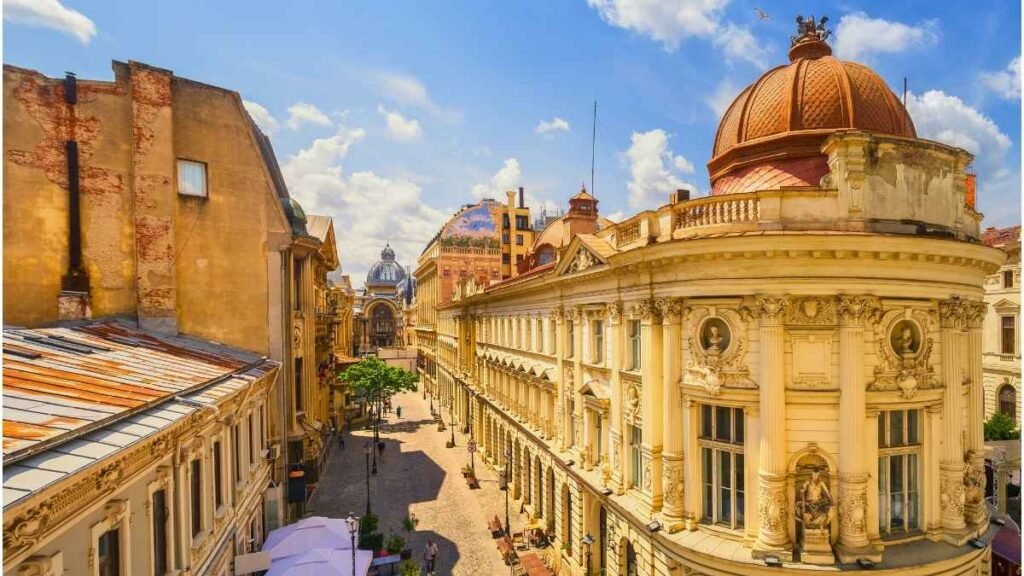
Let’s go for a bold viewpoint: Bucharest is often underrated, yet it’s a city in transformation — “Little Paris” of the East once, now a mix of grand boulevards, historic quarters, and modern growth. Its population is around 1.7 million in city proper with a metro over 2.3 million.
What makes it special: wide avenues, large green parks, a strong arts and cultural scene. For someone wanting more than “tourist circuit,” you could settle into a rhythm of city life, local cafés, smaller museums, and not pay capital‑city Western prices.
Key Practical Information
- Optimal time: April or October for mild weather; summer can be hot, winter cold with possible snow.
- Getting there & around: Bucharest’s Henri Coandă Airport (OTP); city metro, buses, trams work. City centre is larger so pick your lodging wisely.
- Stay duration: 5‑7 days gives you time for historic centre, the Palace of the Parliament, day‑trip to a nearby castle or village. Longer if you like a slower pace.
- Value insight: Because it’s less globally saturated than Western capitals, you often find value in accommodations and dining—especially outside the most touristy street.
- Scene to picture: You wake at dawn, walk through a nearly empty boulevard lined with trees, midday you pop into an independent art gallery, afternoon you sip coffee in a historic building’s café, evening you stroll a less‑touristed neighbourhood and join locals in a music event.
Bucharest gives you the city‑life + value combo with less of the “everybody’s here” feel.
12. Sofia, Bulgaria
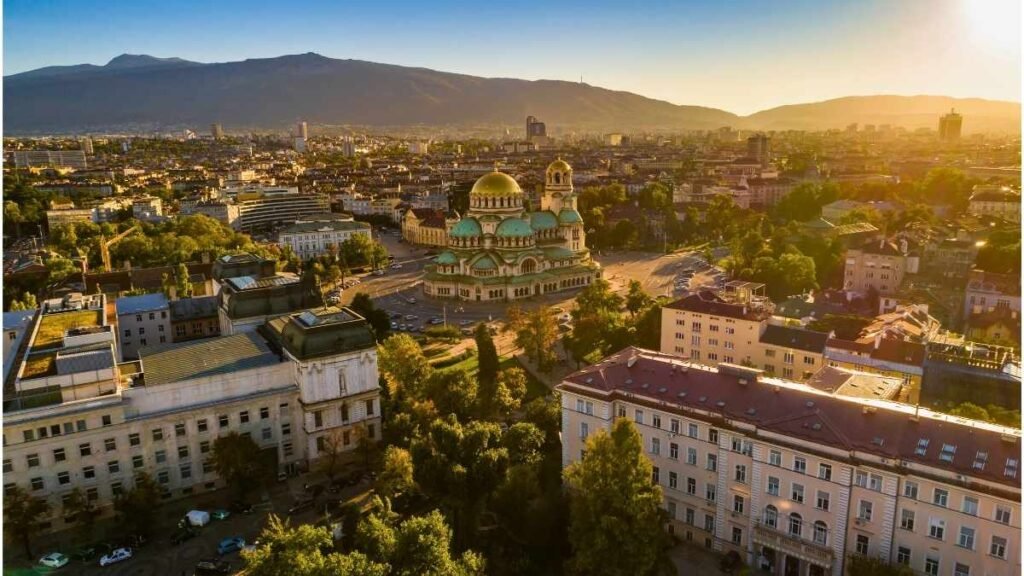
Finally, envision this: Sofia — one of Europe’s oldest continuously inhabited capitals (over 7,000 years) with mineral springs, an approachable size, and a cost‑of‑living that tends to lean lighter than many Western comparables.
The “off‑the‑beaten‑path capital” angle makes Sofia compelling: it’s not drenched in tourist crowds the way some big European cities are. That means you can enjoy cafés, museums, architecture, and history with fewer “tourist‑price” markers.
Key Practical Information
- Best time to go: May or September for good weather, fewer tourists; winters are cold but you’ll love the mountain‑view (Vitosha) backdrop.
- Travel & mobility: Sofia Airport serves many European routes; the city is walkable in the centre, and trams/trolley‑buses fill in gaps.
- Suggested stay: 3‑5 days gives you town centre, historic churches, maybe a mountain tram‑ride; longer if you prefer slower pace and day‑trips.
- Budget tip: Map out neighbourhoods just outside the central tourist core for lodging to get better value; dine where the locals go.
- Scene to picture: In the morning you explore Roman Serdica ruins in a metro station, by afternoon you pause at a mineral spring fountain, later you watch the sunset from a rooftop bar traced by mountain silhouette.
Sofia gives you “capital city amenities” + “value consciousness” + an authentic‑less‑touristy feel—all in one.



